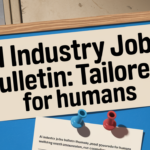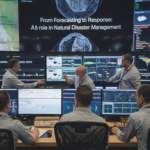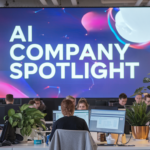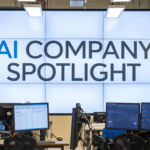Osmo: Giving Computers the Sense of Smell
When I first heard about computers gaining the ability to “smell,” I was intrigued—and skeptical. For years, we’ve seen AI mimic human senses like sight, hearing, and touch, but smell? That seemed almost too futuristic, even for someone who grew up watching The Jetsons. Yet, here we are: Osmo, an AI startup, is on the brink of giving computers a genuine sense of smell, and the potential is nothing short of transformative.
Think about how often scent influences our daily lives. From detecting a gas leak to savoring the aroma of morning coffee, smell is deeply personal and profoundly practical. Osmo aims to bring this capability into the digital realm, and it’s not just a sci-fi dream. Their technology uses advanced chemical sensors and machine learning to analyze airborne molecules—essentially translating “smells” into data that a computer can understand.
Osmo, an AI startup, has developed a groundbreaking technology that gives computers a sense of smell. This “digital nose” uses electronic noses and machine learning to analyze volatile organic compounds, translating smells into data. Applications span various fields, including healthcare (disease detection), food and beverage (quality control), and environmental monitoring (hazard detection). While promising, the technology faces challenges in replicating the complexity of human smell and raises ethical and privacy concerns. The innovation has the potential to revolutionize numerous industries and further integrate AI into our daily lives.
You might enjoy listening to AI World Deep Dive podcasts.
Why This Matters to Me—and Maybe to You
As someone deeply invested in AI’s potential, I see this as more than just another tech breakthrough. It’s a step towards making machines truly perceptive, enhancing their ability to interact with the world in ways that mirror our human experience. Imagine the impact on healthcare: early detection of diseases like diabetes or even certain cancers, identified by subtle changes in body odor. It’s a game-changer.
In the food industry, this technology could ensure consistent quality and detect spoilage before it becomes a problem. For those of us who rely on our favorite gadgets, imagine wearables that can alert you to environmental hazards or even assess your health through scent analysis.
A Deeper Dive into the Technology
So, how does Osmo’s “digital nose” actually work? The system relies on electronic noses (e-noses), devices equipped with arrays of chemical sensors. These sensors detect volatile organic compounds (VOCs), which are molecules that evaporate easily and produce odors. Once the sensors pick up these molecules, they generate a unique digital signature for each scent.
This is where AI comes in. Osmo’s algorithms analyze these signatures using machine learning models trained on extensive datasets of known smells. Over time, the system learns to recognize patterns and correlations, becoming more accurate at identifying and distinguishing between different odors. Essentially, it builds a smell library, much like facial recognition software builds a database of faces.
Real-World Applications: Transforming Industries
Osmo’s technology isn’t just theoretical; it’s already being tested and applied across multiple sectors:
- Healthcare
Researchers have long known that certain diseases emit distinct odors. For instance, diabetes can cause a fruity-smelling breath due to elevated ketones. Osmo’s AI-driven sensors could detect these subtle changes early, enabling non-invasive diagnostics. Imagine visiting a clinic where a simple breath test provides a comprehensive health analysis—a far cry from the invasive procedures we often endure today. - Food and Beverage
In the food industry, consistency is key. Osmo’s technology could revolutionize quality control by ensuring that every product meets exacting standards. From detecting spoilage in perishable goods to verifying the authenticity of fine wines, the applications are vast. For consumers, this could mean safer, higher-quality food and beverages. - Environmental Monitoring
In industrial settings, detecting hazardous gases or pollutants early can prevent disasters. Osmo’s sensors could continuously monitor air quality, providing real-time alerts in case of leaks or toxic emissions. This has implications not just for industry but also for urban planning and public health. - Personal Technology
Imagine a future where your smartwatch or smartphone comes equipped with an olfactory sensor. It could warn you of harmful chemicals in your environment, assess the freshness of your food, or even monitor your personal health through body odor. This isn’t just futuristic fantasy; it’s a practical extension of the wearable tech we already use daily.
The Challenges Ahead
As exciting as this technology is, replicating the human olfactory system’s complexity remains a significant challenge. Smells are affected by countless variables, including temperature, humidity, and the presence of other odors. Training an AI to navigate these complexities requires vast datasets and sophisticated algorithms.
Moreover, ethical and privacy considerations will inevitably arise. For example, how much personal health data should be accessible through scent analysis? How do we ensure that this technology is used responsibly? These are questions that developers, regulators, and society at large will need to address.
Looking to the Future
What excites me most about Osmo’s work is its potential to humanize technology further. We often think of AI as cold and impersonal, but adding senses like smell brings it closer to how we experience the world. This isn’t just about making machines smarter; it’s about making them more perceptive, empathetic, and useful in our daily lives.
As Osmo continues to develop its technology, we’re on the brink of a new sensory revolution. One where our devices don’t just see and hear—they smell. And in doing so, they become more attuned to the world around us, enriching our lives in ways we’re only beginning to imagine.
In a world where technology is rapidly advancing, Osmo’s innovation reminds us of AI’s true promise: not just to replicate human capabilities but to enhance and extend them. I can’t wait to see what comes next—and smell it too.








